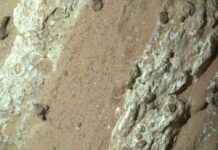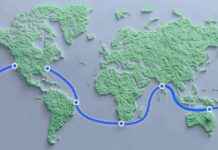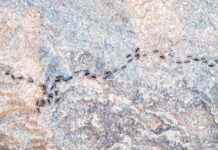Dünyanın En Eski Çarpma Krateri Avustralya’da Bulundu
The oldest meteorite impact crater on Earth has been discovered in the Pilbara region of Western Australia, revealing a fascinating insight into the planet’s ancient history. This groundbreaking discovery, detailed in a recent publication in Nature Communications, sheds light on Earth’s formation more than 3.5 billion years ago, making it the oldest known impact crater by over a billion years.
The journey to uncover this remarkable find was not without its challenges, but the team of researchers persevered and were rewarded with a treasure trove of evidence that supports a revolutionary theory about the birth of Earth’s first continents.
Geologists have long debated the origins of Earth’s oldest rocks, which are crucial for understanding the planet’s geological and biological processes. While some believe these rocks formed above hot plumes rising from Earth’s core, others argue they were created through plate tectonic processes. However, the researchers behind this discovery propose a different explanation.
Their theory suggests that the energy needed to create the ancient continents in the Pilbara region came from outside Earth, in the form of massive meteorite collisions. These impacts generated immense heat and pressure, leading to the formation of continental crust from volcanic material in the mantle.
The search for the impact crater began with a serendipitous discovery of shatter cones, distinctive geological structures that form only after a meteorite impact. These shatter cones, found in the Antarctic Creek Member rocks in the Pilbara, provided the researchers with a crucial clue to unraveling the mysteries of Earth’s early history.
During a fieldwork expedition in the Pilbara, the team came across an abundance of shatter cones, confirming the presence of an ancient impact crater dating back 3.5 billion years. This groundbreaking find not only solidified their theory but also set a new record for the oldest known impact crater on Earth.
The researchers’ return to the site in 2024 allowed them to conduct further investigations, uncovering more evidence of the impact’s age and scale. The presence of shatter cones throughout the Antarctic Creek Member rocks provided irrefutable proof of a cataclysmic event that shaped Earth’s landscape billions of years ago.
As the team delved deeper into the geological features of the site, they realized the significance of their discovery in reshaping our understanding of Earth’s early formation. The ancient crater holds the key to unlocking the secrets of our planet’s past and offers valuable insights into the role of meteorite impacts in shaping Earth’s geological evolution.
The discovery of the world’s oldest impact crater in Australia marks a significant milestone in the field of geology, opening up new avenues for research and exploration. By piecing together the puzzle of Earth’s ancient history, scientists can gain a deeper appreciation of the forces that have shaped our planet over billions of years.
In conclusion, the unearthing of the oldest meteorite impact crater in Western Australia is a testament to the power of scientific discovery and the enduring mysteries of our planet’s past. This remarkable find not only enriches our understanding of Earth’s geological history but also underscores the profound impact of meteorite collisions on shaping the world we inhabit today.















